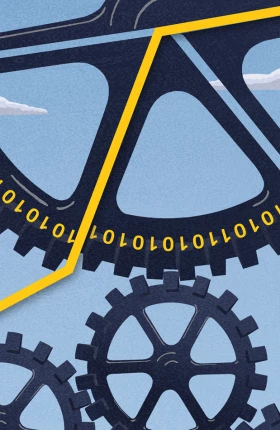When companies think about cost management, all too often they default to workforce cuts or spending reductions. But in process industries like metals and mining, or forestry products, paper, and packaging, that’s a half-solution at best. Cory Kaplin , who leads BCG’s Operations practice in Canada, says that the real, sustainable gains come from improving productivity and changing behaviors.
Meet Cory

What are the latest cost trends for companies in the process industries right now?
Cory Kaplin: Cost has been top of mind for a while. What’s unique now is that inflation and other issues like labor retention and the race to win top talent have been exacerbated. When you overlay those issues on top of a commodity cycle, you get a situation where cost has become increasingly critical for most companies in process industries. Their inputs have become more expensive—especially things like fuel—and they can’t pass those price increases along to customers. They’re getting squeezed .
What are the biggest misperceptions that leaders have about costs?
Leaders often think in terms of cuts and short-term wins, and they don't take a long-term view on how to make the changes sustainable. There are lots of cost levers to pull. But tackling cost more holistically through fundamental business practices—better governance, a certain level of technology and investment, and driving productivity—leads to greater change, deeper change, and more sustainable change if you can get it right.
To be clear, short-term, quick cuts are sometimes necessary. But the common mistake is stopping there and thinking you’re done.
Are companies focused on reducing costs along the supply chain?
That’s one part of it. A lot of companies are trying to improve procurement by focusing on the supply side—how they manage their suppliers. Those measures are pretty straightforward, through things like renegotiating contracts, and they’re sticky, in that the gains last for the duration of the new contract.
But if you really want to make fundamental changes, you also have to address the demand side—the people who do the buying. That could be a formal procurement function or it could be frontline employees authorized to make purchases. Either way, improving the demand side is a more complex task because you're talking about changing people’s behaviors. You're up against culture, momentum, legacy systems, existing ways of working, and other issues. There’s a lot more inertia.
Is there an example of these ideas in practice?
We did a major transformation with the Canadian unit of a global mining company. Costs had risen at the company because there were few control systems over procurement. Contract structures and terms were largely ad hoc, with few standardized terms or established best practices.
To reduce costs, the company divided the entire cost base into core buckets. It identified the categories with the biggest overruns and renegotiated those contracts. More important, it put governance mechanisms in place, such as a monthly forum for conducting postmortems on anything that was over- or underbudget. Management designated contract owners—individuals who were personally responsible for the verification and adherence of that contract. These measures had teeth: bonuses and penalties were assessed based on performance.
In all, the effort led to the company saving $100 million in the first 18 months of the transformation, with another $100 million in savings identified for future gains.
What else should leaders think about?
Another way to tackle costs is to go on the offensive and improve productivity. That’s one of my favorites. Productivity, of course, helps on fixed costs. But it also helps lower labor costs because it allows you to produce more with the same workforce or maintain the same level of production with a smaller one.
It really comes down to business fundamentals—things like sound operating practices, effective scheduling, and good maintenance strategies, often brought together in a lean production system. These measures help companies boost throughput and drive the efficiency of the assets they have through new practices and behaviors. Even simple solutions, like standardized work and effective inspections, are surprisingly inconsistent across the industry, across businesses, and even across assets within the same business.
The other element is making technology investments in new assets: faster trucks, bigger shovels, and so forth. These sorts of solutions can also drive productivity. Making those moves thoughtfully—with an eye on their usefulness for frontline teams and a view of which use cases really move the needle—is a key consideration as well.
Unsurprisingly, these investments increasingly include AI , which can deliver impact via real-time spending analytics and contract management. AI can further boost productivity via schedule optimization, setpoint tuning, predictive maintenance, production simulation, and many other applications. My favorite example is a US-based company that is now using a GenAI -enabled maintenance system to support field technicians in diagnosing and troubleshooting issues. The company has seen increased schedule adherence, decreased maintenance rework, and overall higher equipment availability.
You mentioned maintenance? How does that factor into costs?
If you decrease the time that assets are down for repairs or maintenance, you can boost the overall equipment effectiveness (OEE) of those assets. Many businesses in the process industries are stuck in a 1980s mindset about maintenance—you run an asset until it fails, and the person who swoops in to fix it gets rewarded. The reality is that preventive and predictive maintenance are almost always easier and less expensive than corrective maintenance. But they require very fundamental behavior changes and a certain level of foresight.
We worked with a large mineral processing plant in the US to improve the maintenance and reliability of its key equipment, and we developed a mantra for them: A good shift is a boring shift. We put it on posters all over the facility. The ideal day is a routine day, during which everything runs like clockwork, and nothing requires a rush repair. It’s boring, and it doesn’t produce obvious heroes, but it pays off. At that facility, shifting the focus to preventive maintenance increased OEE by about 7%, and the increased productivity worked out to more than $50 million in reduced costs.
Who owns the cost agenda?
Everyone. People sometimes want to say that cost is someone else’s problem. It’s not me, it’s a maintenance issue, or a procurement issue, or a finance issue. Good cost management is like good strategy. Everybody owns it, and everybody is accountable to deliver it.






